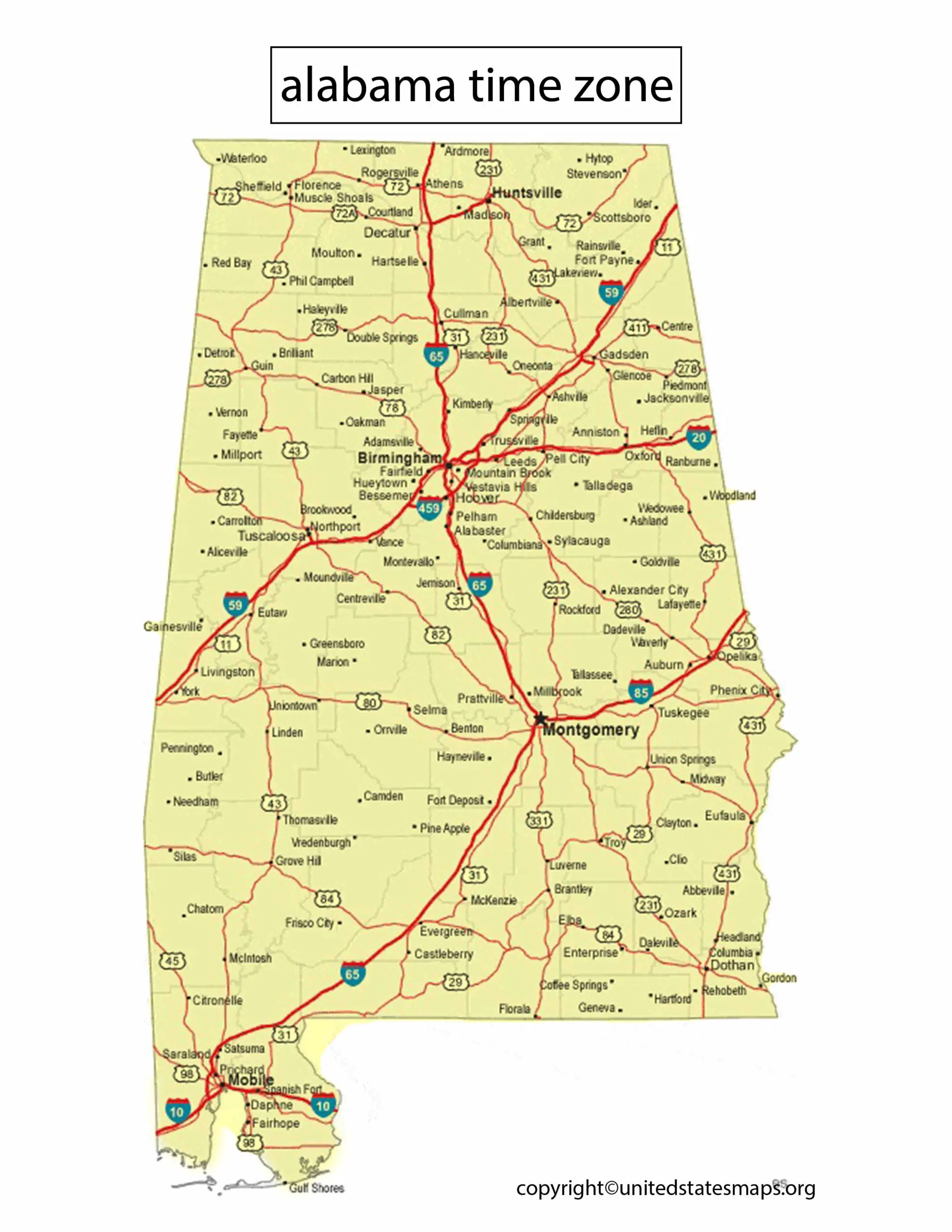
The Comprehensive Guide to Alabama’s Time Zone: Everything You Need to Know!
Navigating Alabama’s Temporal Territory
Embark on a journey through time as we delve into the intricacies of Alabama’s time zone. From its historical evolution to its practical implications and potential pitfalls, this comprehensive guide will equip you with all the knowledge you need to navigate the temporal landscape of the Heart of Dixie.
A Brief History of Time Zones in Alabama
The concept of time zones emerged in the late 19th century as a solution to the challenges posed by the increasing use of railroads and the need for standardized timekeeping. Prior to this, each town and city maintained its own local time, based on the position of the sun.
In 1883, the United States was divided into four time zones: Eastern, Central, Mountain, and Pacific. Alabama initially fell within the Central Time Zone, but in 1902, the state’s western counties were shifted to the Central Time Zone, while the eastern counties remained in the Eastern Time Zone.
Alabama’s Current Time Zone
Today, Alabama is divided into two time zones: the Central Time Zone (CT) and the Eastern Time Zone (ET). The majority of the state, including the cities of Birmingham, Montgomery, and Mobile, observes Central Time. However, the easternmost counties of Chambers, Cherokee, Clay, Cleburne, Randolph, and Tallapoosa observe Eastern Time.
The boundary between the Central Time Zone and the Eastern Time Zone in Alabama generally follows the 85th meridian west of Greenwich. However, there are a few exceptions, such as the city of Phenix City, which observes Central Time despite being located east of the 85th meridian.
Daylight Saving Time in Alabama
Daylight saving time (DST) is a practice of advancing clocks during the summer months to make better use of daylight. In Alabama, daylight saving time begins on the second Sunday of March and ends on the first Sunday of November. During daylight saving time, Alabama observes Central Daylight Time (CDT) in the Central Time Zone and Eastern Daylight Time (EDT) in the Eastern Time Zone.
Not all areas of Alabama observe daylight saving time. The counties of Chambers, Cherokee, Clay, Cleburne, Randolph, and Tallapoosa, which observe Eastern Time, do not participate in daylight saving time. As a result, these counties have the same time as Central Time during the winter months and are one hour behind Central Time during the summer months.
Potential Pitfalls of Time Zone Changes
Traveling between different time zones can disrupt your sleep-wake cycle and cause jet lag. When traveling from a time zone that is ahead to a time zone that is behind, you may experience symptoms such as fatigue, difficulty falling asleep, and impaired cognitive function.
To minimize the effects of time zone changes, it is recommended to adjust your sleep schedule gradually in the days leading up to your travel. You should also avoid caffeine and alcohol before and during your trip, and get plenty of rest.
How to Stay on Track in Alabama’s Time Zones
To avoid any confusion or missed appointments, it is important to be aware of the time zone you are in when traveling in Alabama. You can check the time zone of a specific location using a time zone map or by searching online.
Most smartphones and computers automatically update their time zones based on your location. However, it is always a good idea to double-check the time before making any important appointments or catching a flight.
Conclusion
Navigating Alabama’s time zones requires a basic understanding of the state’s history, current time zones, and daylight saving time practices. By being aware of these factors, you can avoid any potential pitfalls and ensure that you are always on time for your appointments.
Leave a Reply